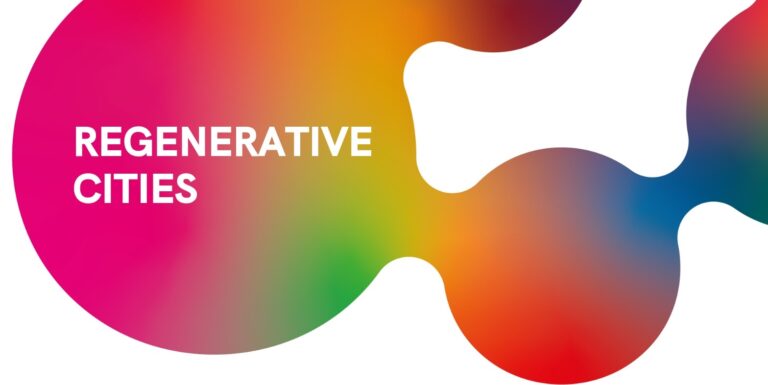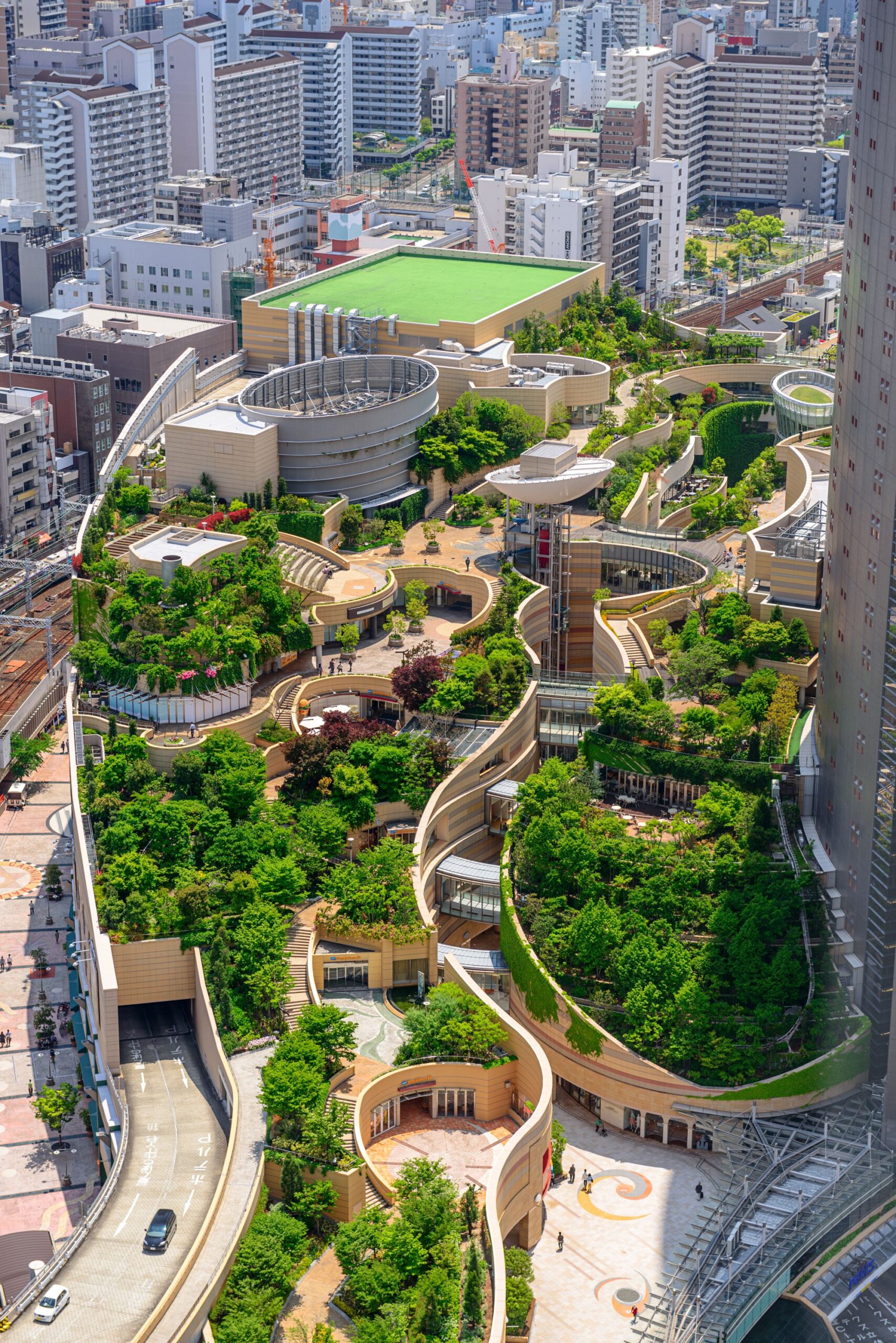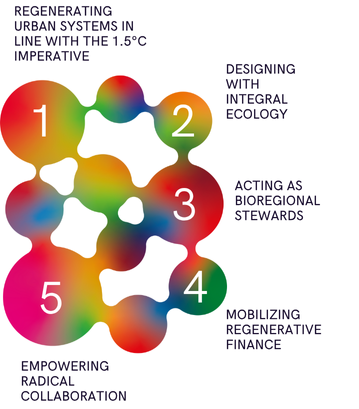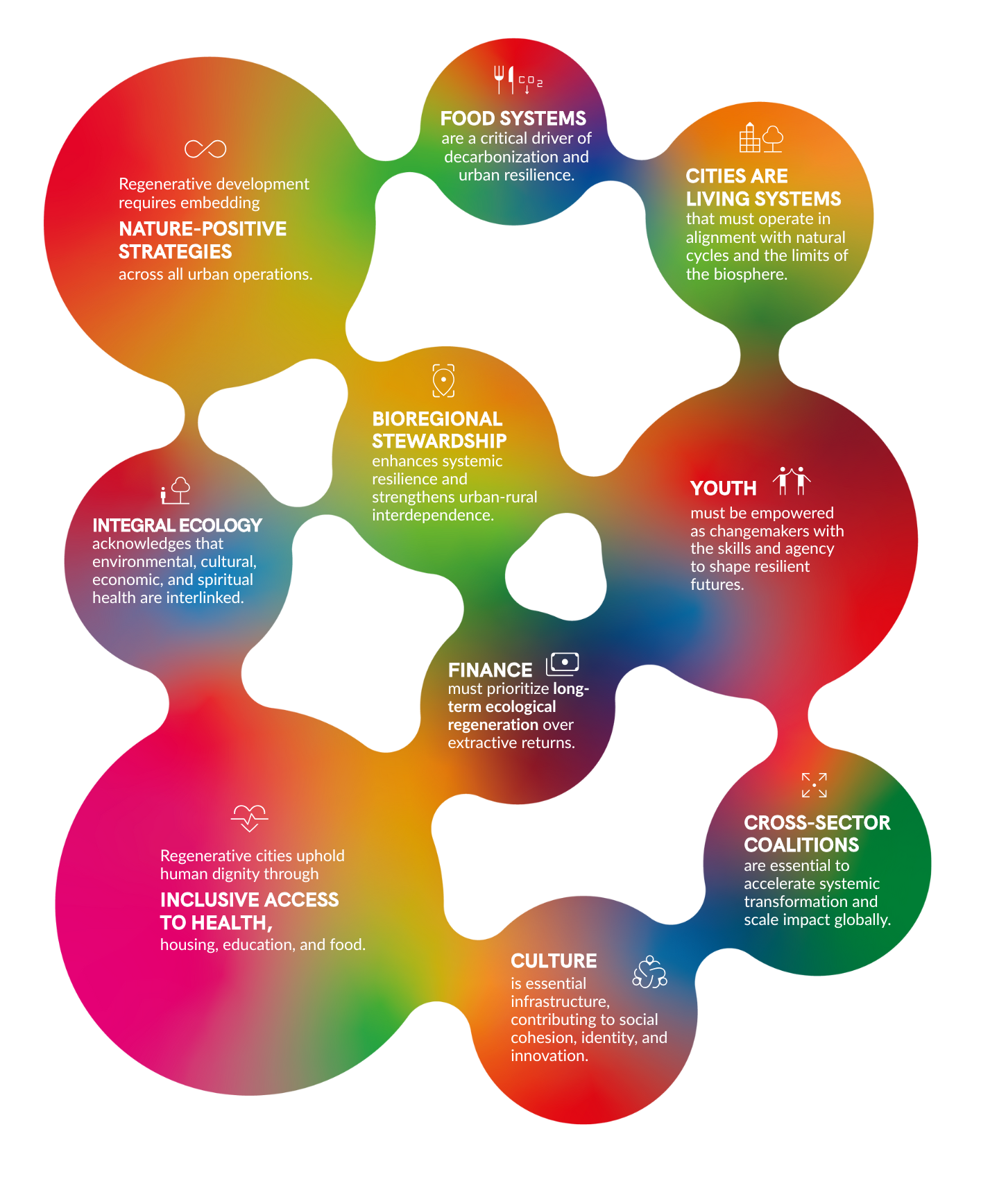
Introduction


Introduction
Tokyo Tatemono – with over a century of pioneering urban development – now embraces a new vision of leadership. As cities around the world face the interconnected crises of climate disruption, biodiversity loss, and social fragmentation, Tokyo Tatemono dares to imagine a future where urban life is redefined as a living system – one that aspires to regenerate, reconnect, and restore. At the heart of this vision Future Food Institute, a global ecosystem devoted to reimagining food systems as catalysts for profound ecological transformation. Together, they extend the global mission into the urban landscape, suggesting that cities must evolve from extractive entities into regenerative engines of well-being.
This manifesto is therefore grounded in the aspirations of food sovereignty, planetary health, and civic resilience.

Why Regeneration, Why Now, Why Cities
Regenerative cities create expanding cycles of positive change. They don’t just sustain—they actively improve the health of people, nature, and economies. Every industry, person, and community is a stakeholder in this transformation, with all sectors—from technology and manufacturing to education and healthcare—able to reimagine their role in creating thriving territories.




The question isn’t whether to change, but how quickly we can scale this transformation, coordinating efforts to create a unified impact rather than fragmented actions.
Cities are the critical leverage point for planetary regeneration
Regenerative cities unite urban and rural territories, businesses, institutions, governmental bodies, local public authorities, and diverse communities, harnessing social capital, innovation, and cutting-edge technologies, including generative AI, to accelerate and amplify regenerative impact: it is a whole-of-society transformation where every industry and individual contributes to and benefits from regenerative outcomes.
Regenerative cities “give forward” by creating expanding positive cycles that continuously improve ecological, social, and economic conditions.
Territories embracing regeneration become seeds of possibility, showing that urban systems can enhance, rather than degrade, their environments.
Vision
The Regenerative Cities Movement aspires to leverage the transformative power of cities and their ability to catalyze forces to create thriving, living territorial systems. The emphasis of regenerative cities is not simply on restoration, but on the active generative power that urban systems have to enhance and catalyze new human, social, cultural, natural and economic capital around edge-cutting innovations for urban and rural regeneration.
What is a Regenerative City
A regenerative city is an urban system that continuously renews and regenerates itself while enhancing the health and resilience of the bioregion it inhabits. It continuously creates the conditions for natural and social systems to thrive and evolve, shifting urban development from extraction to regeneration. As a living system, a regenerative city cannot be conceived -nor brought to life- without the active involvement of communities, embracing their diverse capabilities, backgrounds, and needs.

Join the Movement: Five Strategic Priorities
The five strategic priorities outlined below represent collective actions needed across all sectors of society to advance the global regenerative cities movement. These are urgent areas where we call upon cities, governments, businesses, communities, and civil society organizations to collaborate and take action together.


1. Regenerating Urban Systems in Line with the 1.5°C Imperative
Aligned with the FAO’s 1.5°C Roadmap for Agrifood Systems Transformation, cities are recognized as key actors in reaching global climate targets. Urban systems must contribute to halving emissions by 2030 and achieving net-zero by 2050, playing a central role in the transition towards climate-resilient and regenerative futures.

2. Designing with integral ecology
Inspired by models such as Pollica 2050, this approach embraces the interconnectedness of environmental, social, cultural, and spiritual dimensions. Cities must actively restore ecosystems and nurture human flourishing.

3. Acting as bioregional stewards
Cities are not isolated entities. They are deeply embedded in their bioregions. From the watersheds that supply their needs to the farms that provide nourishment, urban and rural systems are inherently interdependent.

4. Mobilizing Regenerative Finance
Finance must serve the regeneration of life. This means reorienting capital to support long-term ecological value rather than short-term extraction.

5. Empowering Radical Collaboration
Regenerative cities are co-created by citizens, not imposed by institutions. They are the outcome of shared leadership, civic imagination, and diverse forms of intelligence.
Ten Pillars of Regenerative Cities

